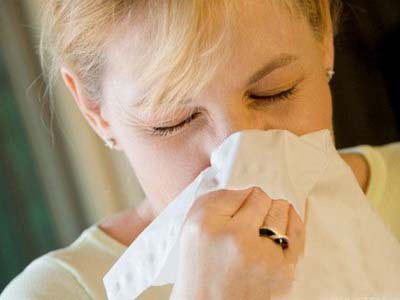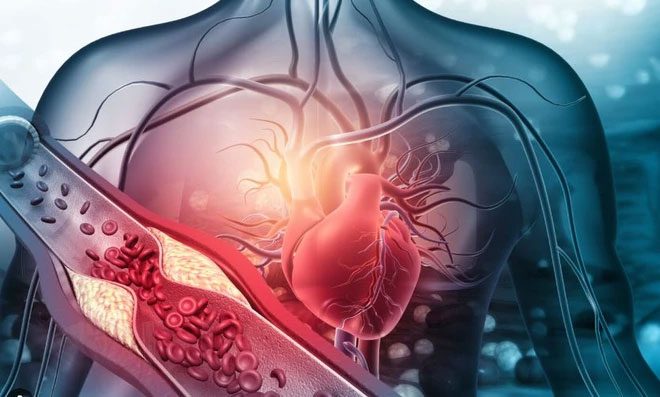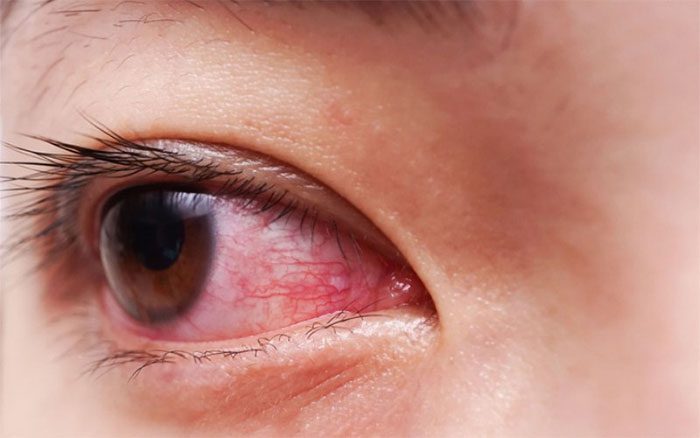During seasonal transitions, the lungs are particularly vulnerable, and if not treated promptly and properly, patients may suffer from infections that can penetrate deeper into the alveoli and bronchi, posing significant dangers, even leading to death.
Seasonal Illnesses refer to a group of diseases that commonly arise during the transition from autumn to winter. This period is marked by fluctuating temperatures, differences between day and night, and decreased humidity, which increases the body’s energy expenditure and reduces immunity, making it easier to fall ill, especially among children and the elderly.
Moreover, the changing environmental conditions during seasonal transitions also create favorable conditions for pathogens to proliferate and spread, further increasing the risk of illness.
Who is Most Vulnerable During Seasonal Transitions?
Individuals who are more susceptible to illnesses during the autumn-winter transition typically include those with weakened immune systems. Some of these groups include:
- Children: Young children are highly susceptible to infections during seasonal transitions because their immune systems are still developing. Particularly, when children become ill, their symptoms often worsen compared to adults.
- The Elderly: This group often has underlying health conditions such as hypertension, diabetes, kidney, or heart issues. Consequently, their immune systems are weakened, making them more vulnerable to seasonal illnesses.
- Pregnant Women: Illness during the first trimester of pregnancy can easily lead to fetal deformities. Even when sick, pregnant women are usually hesitant to take medication for fear of affecting their fetus, which can prolong their illness and lead to fatigue. Therefore, prevention is the top priority for pregnant women.
Common Illnesses During Seasonal Transitions
Seasonal illnesses during the autumn-winter transition are quite common, and anyone can be affected. Below are some illnesses frequently encountered with changing weather.
Allergic Rhinitis
During seasonal transitions, temperature changes and the presence of allergens in the environment, such as pollen, plants, and mold, can trigger allergic rhinitis in sensitive individuals, resulting in symptoms like itchy nose, sneezing, runny nose, and continuous nasal congestion.
Flu
Due to the fluctuating temperatures in autumn, the body is susceptible to the flu. Therefore, it is essential to cultivate healthy habits to avoid cold weather from early autumn, paying attention to the weather to dress appropriately. Those who already have a cold should consume dishes made with onions, as cooking them with tofu can be very effective.
Autumn is also a season when many people suffer from bronchitis, as this condition is sensitive and difficult to adapt to the unpredictable climate changes, leading to respiratory inflammation. Thus, it is crucial to coordinate treatment based on the characteristics of bronchitis, which tends to recur and is challenging to cure completely.
In autumn, with dry and wilted vegetation, there are relatively many allergens in the air, which is one of the causes of bronchitis. The best approach is to avoid exposure to allergens. Improving indoor air quality, ensuring ventilation, and reducing dust and pollution are vital.

Due to the fluctuating temperatures in autumn, the body is easily affected by the flu. (Image: Gettyimages.com)
Stomach Issues
Autumn can also lead to a recurrence of stomach issues for many. The stimulation from cold air can increase histamine levels in the blood, causing excessive gastric acid secretion and strong contractions in the digestive system, which reduces the body’s resilience and adaptability to climate changes.
Additionally, the cool weather often increases appetite, which can further burden the digestive system, making stomach problems more likely to recur. Those with such issues should not only dress warmly but also cultivate healthy habits to minimize the risk of illness. Eating scientifically at each meal, avoiding overeating, and spreading meals throughout the day are advisable, along with avoiding smoking and alcohol consumption.
Joint Pain
Fluctuating temperatures can also cause joint pain. Individuals with joint issues should take precautions against the cold and dress warmly, especially after sweating, and should avoid bathing in cold water.
Blood Pressure and Neurological Issues
With the increased rainfall and lower temperatures in autumn, blood pressure and neurological issues can arise. Many people may feel anxious or depressed. The humid climate fosters bacterial growth, making the body more susceptible to gastrointestinal and skin diseases.
To mitigate the effects of autumn weather, one must first enhance their adaptability to the environment, applying appropriate preventive measures based on the climate. This season also sees an increased risk of parasitic infections and mosquito bites, leading to redness and itching. Scratching can result in skin infections and pus formation. Therefore, after a mosquito bite, one should avoid scratching and may apply menthol oil to reduce inflammation and itching.
Pneumonia
As the transition from summer to autumn occurs, the dry climate increases the risk of pneumonia.
The lungs are the most affected organ due to the dry autumn climate, so one should focus on strengthening lung health to prevent pneumonia.
Diet also plays a vital role in prevention. It is advisable to reduce the intake of spicy foods and consume more cooling foods such as pears, radishes, lily bulbs, and lotus seeds to hydrate the lungs.
Heat Stress
The dry climate in autumn, combined with unhealthy habits, can lead to heat stress.
“Heat” occurs when the body’s regulatory systems fail. Often, there are no clear symptoms before experiencing heat stress, but once it occurs, symptoms may include rapid heartbeat, a flushed face, dry mouth and lips, restlessness, and in severe cases, symptoms such as mouth ulcers and sore throat affecting eating.
To avoid heat stress, experts recommend establishing good daily habits, maintaining regular rest hours, avoiding late nights, eating on schedule, and not skipping meals while avoiding overeating. Additionally, consuming cooling foods like dark leafy greens, cucumbers, oranges, and green tea can effectively help cool down the body, while carrots are excellent for preventing dry lips.
During heat stress, avoid spicy foods, alcohol, and smoking, maintain oral hygiene, frequently rinse your mouth, drink plenty of water, and take cooling medications under medical supervision. If heat stress persists for over a week without improvement, it is necessary to seek hospital treatment.
Measles
Measles is a contagious disease caused by the measles virus and is one of the common diseases during seasonal transitions.
Measles presents characteristic symptoms such as fever, rash, cough, red eyes (conjunctivitis), and runny nose; it can lead to severe complications such as otitis media, pneumonia, diarrhea, corneal ulcers, and encephalitis, which can result in death.
The disease spreads through respiratory droplets from an infected person’s respiratory tract or through direct contact or contaminated hands with respiratory secretions containing the pathogen.
Hand, Foot, and Mouth Disease
Hand, foot, and mouth disease is also common in October and November when weather changes are complex. The disease typically appears in children under 10 years old, especially those under 5. It is caused by a virus, with the first symptoms often being fever.
Allergies
The temperature difference between day and night, along with reduced humidity, can trigger skin conditions such as dryness, allergies, and rashes. Common symptoms include red, itchy skin causing discomfort.
To prevent these conditions, you can apply moisturizing cream to keep your skin hydrated. Additionally, maintaining cleanliness, keeping warm daily, and especially consulting a doctor before using any medication if the cause of the allergy is unclear is essential.
Heart Failure
During the seasonal transition from autumn to winter, individuals with heart failure are at a higher risk of recurrence. The abrupt weather changes require the body to adapt, which can overload the cardiovascular system, leading to severe consequences for heart health. Therefore, patients should have regular check-ups to monitor their cardiovascular health.

(Image: Getty Images)
Sinusitis
Sinusitis is a fairly common condition in Vietnam, especially during seasonal transitions when low humidity and dry air can cause nasal mucosa to flake, leading to sneezing, runny nose, and facial pain, often accompanied by headaches, earaches, and throat irritation.
While not overly dangerous, sinusitis is one of the more challenging conditions to treat completely, causing significant discomfort and inconvenience for sufferers.
In addition to taking prescribed medications, individuals with sinusitis should limit their intake of cold foods, dress warmly, and wear masks when going outside.
Conjunctivitis
Conjunctivitis is another common ailment that tends to occur during seasonal transitions due to bacteria and viruses taking advantage of the body’s inability to adapt quickly. Conjunctivitis causes discomfort in the eyes, including redness, excessive tearing, swelling, and pain, making it challenging for individuals to feel confident in social interactions.
To prevent infection, it is essential to maintain personal hygiene and cleanliness in living spaces. Due to the contagious nature of the disease, it is crucial to avoid contact with infected individuals. Do not share towels or washbasins, avoid rubbing your eyes, and wash your hands frequently with soap. Additionally, wearing glasses outdoors, using eye drops daily, washing face towels with soap, and drying them in the sun are recommended. If you contract the disease, you should take a break of 7-10 days for isolation and complete treatment to prevent spreading it to others.

Conjunctivitis is also a common ailment that occurs during seasonal transitions.
Dengue Fever
The changing seasons are a time when bacteria and viruses proliferate and become more virulent, including the virus that causes dengue fever. Dengue fever poses a risk to all individuals, particularly children and those with chronic obstructive pulmonary disease.
Patients may exhibit symptoms such as high fever, fatigue, nausea, and body aches, often mistakenly believing they are experiencing a recurrence of an old illness, leading to negligence in seeking medical attention. When the disease worsens, it becomes more dangerous, and patients may only realize the severity when they are in critical condition and need to be hospitalized, complicating treatment efforts. In many cases, individuals have not survived due to dengue fever.


















































